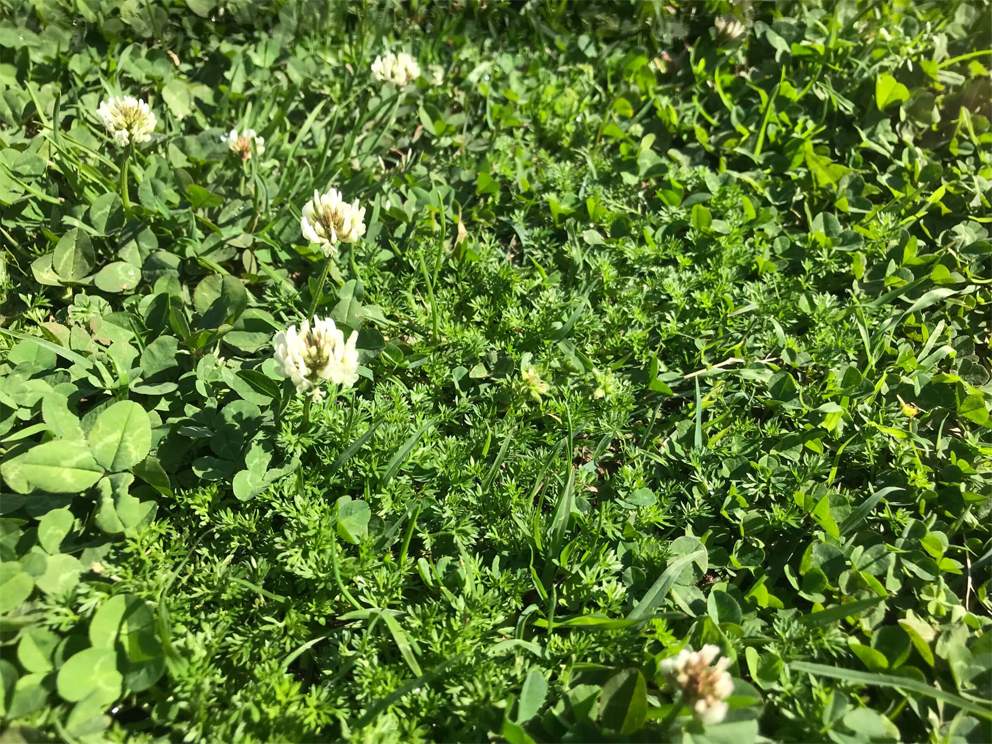Weeds are, quite literally, a pain in the foot. They are very adaptable at growing in some difficult places, but when the soil conditions are “goldilocks” (just right) they grow a lot faster than your lawn and before you know it, they’ve taken over.
The good news is we can put them to use, identifying the conditions in which they thrive can give us an indicator of the soil’s health. In this blog The Lawn Genius explains how he knows a lot about a soil before even stepping onto the lawn. Using this knowledge he talks about how to remedy these issues and get your lawn back on its way to lush green grass.
So, let’s talk weed control!
The weed: Bindii
We have pretty much all had this one at some point in our lawns, it travels every year on the feet of kids, pets, and even on the tires of the postie who travels from your neighbour’s lawn to yours.
The soil issue: Compaction
The odd bindii here and there isn’t a big sign of compaction issues, after all they’re prickly fellas who travel well. On the other side of the spectrum though is a lawn with a huge number of bindii. This generally occurs in lawns that are heavily compacted, this can come from the soil type, driving the car on the lawn or simply over time the lawn becomes compacted as soil particles migrate due to rain. The lawn struggles to grow because there is very little oxygen in the rootzone of the soil, this thin coverage allows the seed of the bindii to germinate and as it doesn’t mind the compaction it’s free to grow with very little competition.
The treatment: Treat weeds and reduce compaction
Spraying bindii is crucial to slowing their spread down and to get the best results a quick understanding of their lifecycle will be very valuable. They are an annual weed which germinates in February, grows through to December, when the seed becomes a spike and the seed is spread by shoes, pets and cricket matches.
This weed loves to travel via it’s spike so this is definitely one where you should consider paying it forward, that is, spraying your neighbours lawn too.
Spraying your bindii with Bow & Arrow anytime between April and July is the perfect time to stop the weeds from going to seed properly, this breaks the cycle and reduces the seed “bank” for next year. You can obviously spray anytime but this is when you can have the most impact on breaking the weed cycle.
Reducing your soil compaction is a great cultural practice to help reduce the numbers in following years. Getting some oxygen into your soil can be achieved in a range of ways, for smaller lawns a standard garden fork or a hand corer can be a great way to achieve this. For larger lawns it really is recommended to get some help, the use of a core aeration machine from a hire shop or a local contractor is the best way to go here. In extreme cases of compaction, it may be easier to start again, killing the lawn off and attacking it with a rotary hoe to aerate the soil.
Lawn Genius Tips
- Add some organics to the soil to help prevent compaction
- Check for irrigation and other services before using machinery on your lawn, although services are usually buried at a good depth soil can move over time and gardens are moved and built.
- Make a mark or use some tape as an indicator on the side of your garden fork to get consistent depth, 100mm should do it, a little wiggle with the fork is good for disturbing soil
- The closer the pattern of aeration the better the decompaction will be, every 50mm is a good practice
The weed: Clover
Just about everybody can identify Clover, after all they have 4 leaves right? Ironically the image generally used for the four leaved clover often has four heart shaped leaves. Not even close to clover, so save that one for the next St Patricks Day.
Heart shaped leaves are actually a great way to identify the weed Oxalis and Clover is a trifoliate (three compound leaves) so I guess we’re all out of luck finding one with four leaves.
The Soil Issue: Low fertility
Clover has a massive competitive advantage in soils where the nutrition is low. It’s a legume, that means it can take nitrogen out of the air and use this to grow (it’s a complicated process involving the roots and bacteria).
As you can imagine, in a lawn where nutrition is low, but the weeds can turn nitrogen from the air into food, then the lawn has very little chance to outcompete the weeds.
The treatment: Treat weeds and increase fertility
Fortunately, Clover isn’t the hardest weed to kill and many broadleaf herbicides like, Bow & Arrow and Dicamba M provide great control without damaging your lawn.
Secondly, improve the lawns health, give it a fighting chance against the clover. Simply apply Lawn Play All Rounder and water it in to get that soil nutrition level back to a good base.
Lawn Genius Tips
Clover often attracts bees, so spray when weeds are not flowering to protect against off target damage to bees
The leaves of Clover can lie in all sorts of angles so it can sometimes be hard to hit all of it. Clover is also a little sneaky, regenerating from various areas if they aren’t all properly treated. So a 2nd application is recommended at 8 weeks post the initial application.
Make sure it’s not Oxalis, ensure the leaves aren’t heart shaped, Oxalis is harder to kill and Bow & Arrow is the best product for this weed as it has stronger residual control.
Use a fertiliser like Lawn Play All Rounder that builds your soil health, not just a big hit of nitrogen that will have you mowing twice a week.
The weed: Nutgrass
Nutgrass, should be called “not grass”, after all it’s a sedge. Sedge’s have a few common things with grasses but they have glossy leaves and are generally pretty hard to kill.
The Soil Issue: Wet soil
Sedges are generally found along the edges of river banks, so it’s not surprising to find that Nutgrass is a lover of wet soils and can’t survive in dry soils.
The treatment: Treat the weeds and improve drainage
Nutgrass has very small bulbs which snap off very easily, so removing by hand will not result in great success. It’s better to reach for a selective herbicide suited for removing nutgrass from your lawn like Tempra.
As mentioned it loves wet feet, so try to dry the soil out as much as possible, there’s a few ways to do this:
- Add some drainage
- Add sand to some core holes
- Divert water elsewhere
- Reduce irrigation of this area
Lawn Genius Tips
- Sedges have glossy leaves, herbicides can tend to roll off weeds like this. The use of a surfactant like wetout helps ensure the herbicide sticks as well as penetrates the weeds surface
- Nutgrass loves to come back from the bulb, so prepare for multiple treatments, fortunately Tempra is a good pack size for multiple treatments
- The active ingredient used to kill nutgrass (Halosulfuron-methyl) doesn’t last long in water, so only mix up sufficient chemical to cover your area
The weed: Wintergrass
Wintergrass is a small-tufted lime green grass that is very highly adaptable. As it likes cooler conditions it is a weed with very little occurrence in Queensland but plenty in NSW and further south. It has literally 100’s of weeds so this needs a different course of action.
The soil issue: Shaded lawn, wet, compacted
Wintergrass is a cool season grass that generally persists as an annual weed, it germinates around March and grows through to September before dropping literally 100’s of seeds which remain in the soil, viable for many years to come. It germinates first in areas of the lawn that are impacted by shade, using the thinner areas as an opportunity to grow through.
The treatment: Dense turf and pre-emergent herbicide
Wintergrass really loves thin lawns so it’s important to ensure your lawn has recovered from any Summer stress and is nice and dense going into Autumn, this can be achieved by an application of Lawn Play All Rounder in early March to encourage density.
Wintergrass is a very difficult weed to kill in an existing grass. Basically, killing one grass from another grass is dangerous and many of the chemistries are expensive. If that isn’t enough the timing needs to be perfect, if you miss any weeds before they start flowering you will have seeds for next year and the the year after that and the year after that. So we recommend an application of a pre-emergent herbicide like Barricade, this gives a wider range of timing flexibility (February sometime) and prevents the weeds altogether.
Lawn Genius Tips
- Prevention is the professional way, use Barricade
- Barricade can also be used in garden beds to prevent weeds
- Make sure you are feeding your lawn enough to ensure dense coverage, as a rough guide 2-3 applications per year may be required
Conclusion
Knocking out the weeds in your lawn and improving the soil conditions will simply make your lawn better and the weeds less likely to return.

